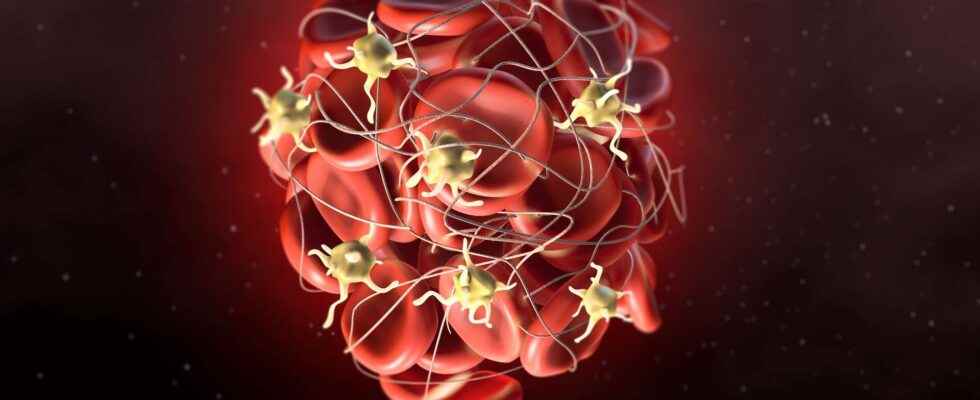A thrombosis corresponds to training pathological of a blood clot in artery (thrombosis arterial) or vein (vein thrombosis). It arises during a deregulation of the mechanisms of hemostasis that help control the flow of blood. Under normal physiological conditions, the contraction of the vessels, the activation of platelets and factors of coagulation are all elements that intervene in the formation of a clot in response to a hemorrhage.
What are the mechanisms of thrombus formation?
If the inner wall of a vein is damaged or there is a slowdown in blood blood circulation (immobilization of the lower limbs during surgery, taking medication, pathologies), the hemostasis system starts up as if it were a hemorrhage: the platelets accumulate, induce a cascade reaction of coagulation factors. An accumulation of fibrin imprisoning them Red cells occurs thereby promoting the formation of an obstructive thrombus.
Complications and factors favoring thrombosis
Blockage of an artery leads to cardiovascular pathologies (infarction myocardium in the case of coronary arteries) or Stroke if the affected artery is located in the brain. Venous thrombosis most often affects a vein in the lower limbs (phlebitis superficial or deep depending on the location).
With 50,000 to 100,000 cases each year in France, this pathology does not present any symptoms very specific, but must be really taken care of because of the risks of major complications that it can cause. Thus, in the case of a phlebitis deep, the blood clot may at any time migrate to thepulmonary artery and generate a pulmonary embolism in case of obstruction. This embolism can involve the prognosis vital with figures ranging up to 10 to 20,000 deaths in France each year.
The contributing factors are venous insufficiency (heavy legs, varicose veins) or increased blood clotting. The pregnancy, tobacco, a contraception hormonal, some chronic diseases can promote blood clotting and, therefore, the formation of a thrombus.
In severe forms of the disease, infection with SARS-CoV-2 has been identified as a major risk factor for thrombosis and pulmonary embolism (risk estimated at 45% in intensive care). This phenomenon is explained by theinflammation linked to the immune response which locally increases coagulation and the presence of virus which causes changes in the vascular wall.
You will also be interested
Interested in what you just read?
.
fs7
